Endotracheal intubation is a medical procedure that allows the provider to place an endotracheal tube into the mouth or nose, through the trachea into the lungs. The endotracheal tube is then connected to a ventilator to supply oxygen to the lungs. This protocol covers the task of endotracheal intubation placement by a Nurse Practitioner (NP).
The purpose of this standardized procedure is to allow the Nurse Practitioner to safely place an endotracheal tube when needed. An Endotracheal tube may be needed in routine preoperative placement for anesthesia, non-urgent placement and urgent case scenarios.
Learning Sequence Builds Confidence
The learner practices the procedure in the ‘guided mode’ (ghosted hints, narrative from tutor) as often as they like.
When the learner is confident that they can accurately demonstrate the procedure without error, the learner plays the level in the ‘expert mode’ (no hints or coaching narration) - which they can repeat as often as they wish.
Finally, when the learner is confident that they have mastered the procedure - they take a one-time ‘exam’ attempt which results in their grade for that procedure.
Features
Guided Mode - ghosted hints show step-by-step positions, learner can 'see through' the patient to verify placement.
Oculus Quest Hand Tracking - learner uses natural hand movements to interact (no need to memorize buttons & controls).
Oculus Quest Affordability & Ease of Use - next generation game development processes allow the untethered, mobile VR to present effective visual and interaction fidelity at 1/4 of the cost of desktop VR.
Physiology Engine - real-world patient & case data informs the simulation.
Feedback - Cloud-based enterprise incorporates real-time data acquisition that allows learner to track progress and mastery, and provides detailed insights for debrief with faculty.
Support - Enterprise incorporates Knowledge Base (with tutorial videos & FAQ) - combined with help desk support staff for learners and staff.
Endotracheal Intubation Checklist
- Wash hands and don personal protective equipment.
- Check equipment and check endotracheal cuff for leaks.
- Preoxygenate with 100% O2 using ambubag or Jackson-Reese circuit for 3-5 minutes to wash out residual nitrogen gas.
- Assess for ability to mask ventilate.
- Grasp the laryngoscope in the left hand (non-dominant hand).
- Open the mouth and inspect (tilt head into 'sniffing position'); remove any dentures/debris, suction any secretions
- Slowly insert the blade into the right side of the patient’s mouth using it to push the tongue to the left. Advance the blade inward and midline toward the base of the tongue.
- The tip of the curved blade should be placed in front of the epiglottis in the valecula. The tip of the straight blade should be placed under the epiglottis. Apply pressure caudally and upward with the handle at a 45 degree angle the bed.
- Lift the handle until the vocal cords are visualized ensuring that the blade or handle is not levered against the incisors.
- Grasp the ETT tube with the right (dominant) hand.
- Gently insert the ETT along the right side of the mouth under direct visualization of the vocal cords until the cuff is no longer visible.
- Firmly hold the ETT in place, withdraw the blade and inflate the ETT cuff with 5-10ml of air.
- Attach end tidal CO2 monitor and Jackson-Reese circuit to the ETT and give positive pressure breaths.
- Assess for proper placement of ETT by end tidal CO2 waveform, fogging in ETT, bilateral breath sounds, symmetric chest movement, and absence of breath sounds over the epigastrum, as well as return to baseline vital signs.
- If assessment indicates that the ETT is not placed in the trachea, deflate the cuff and remove the ETT. Resume mask ventilation with 100% O2. Consult with staff on strategy to reattempt intubation.
- If breath sounds are absent on the left, deflate the cuff and withdraw the ETT 1-2cm and evaluate for correct placement.
- Attach the secure the ETT with tape.
- Attach the ETT to the mechanical ventilator.
- Order and review arterial blood gas 30 minutes post intubation.
